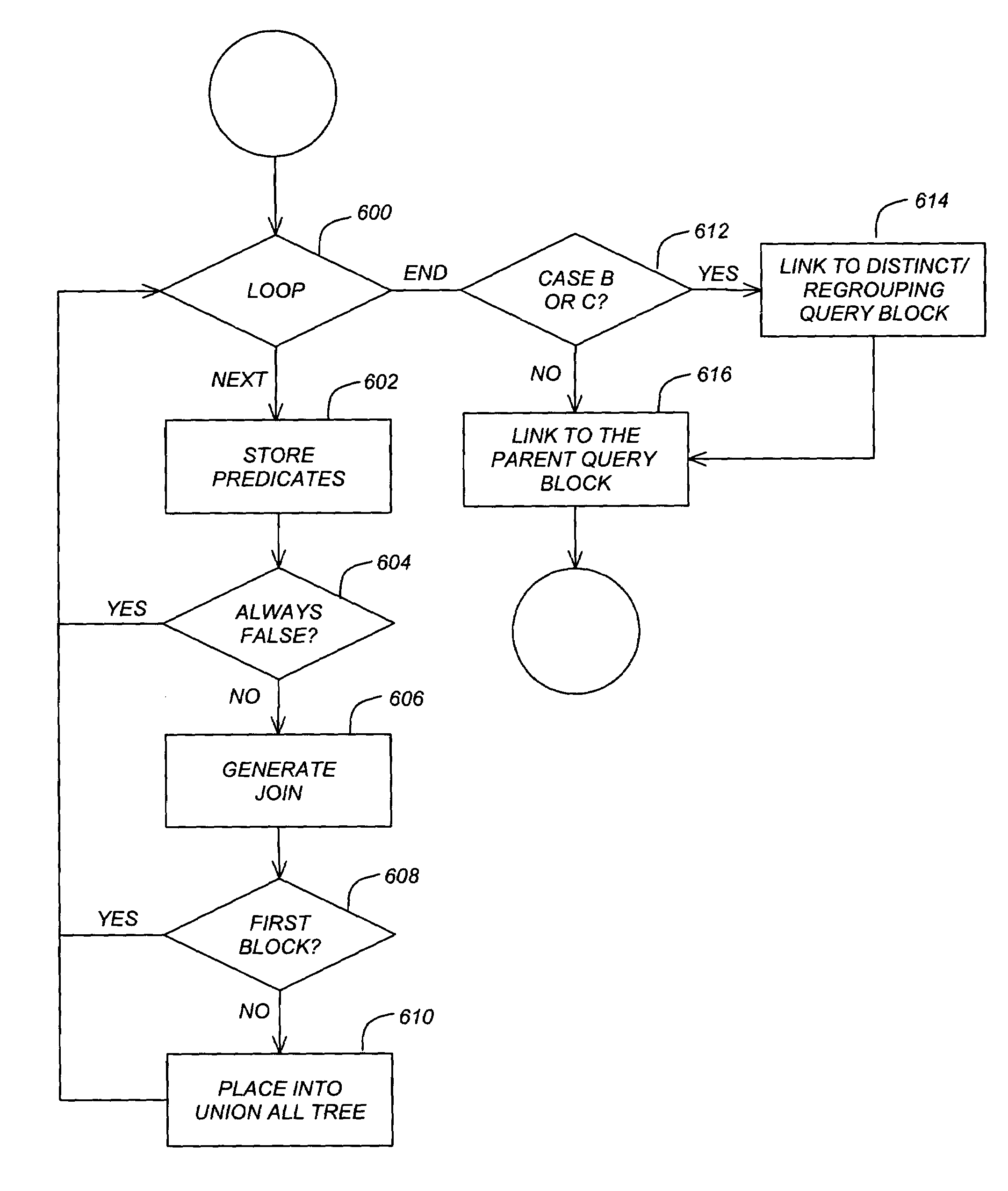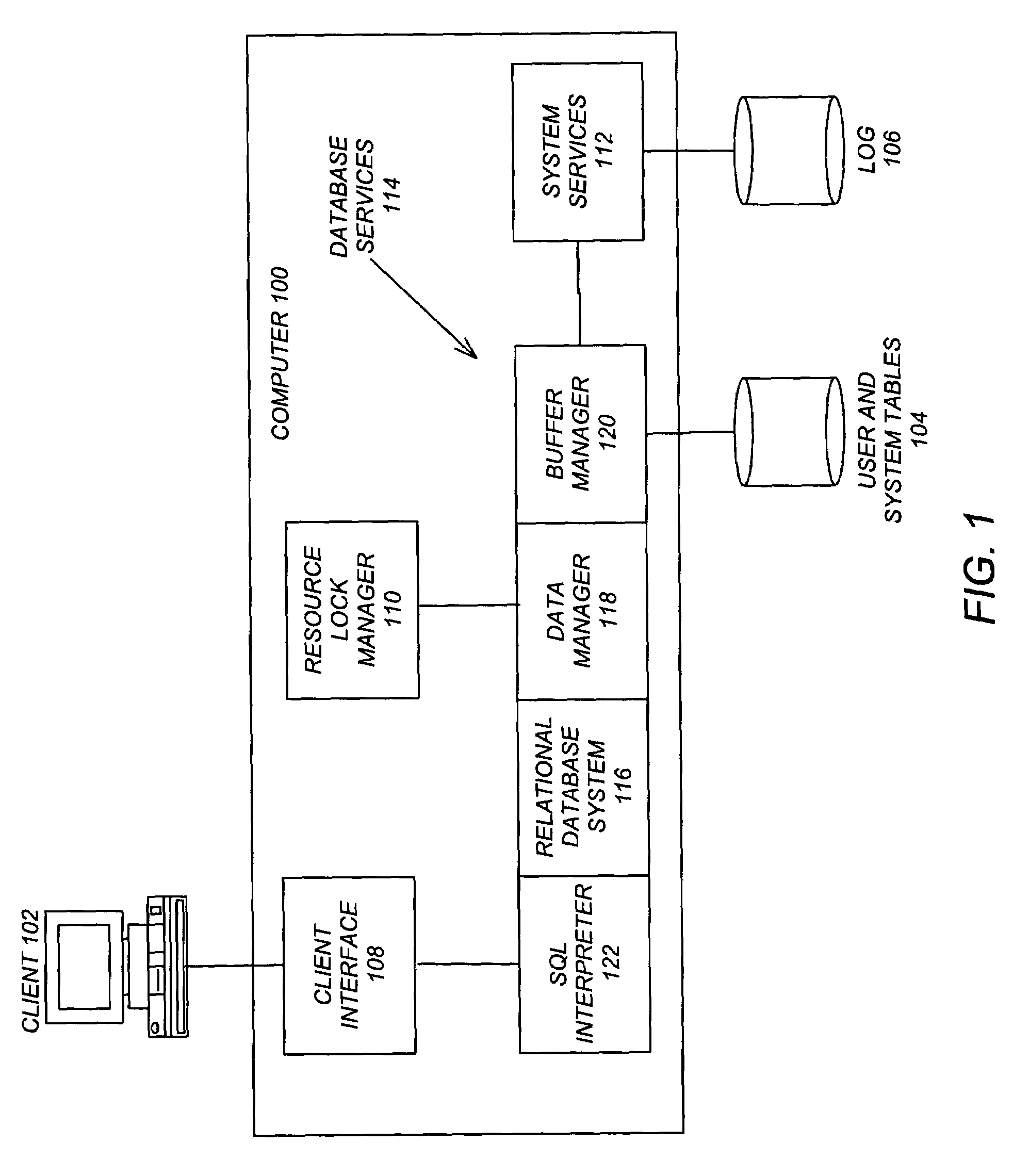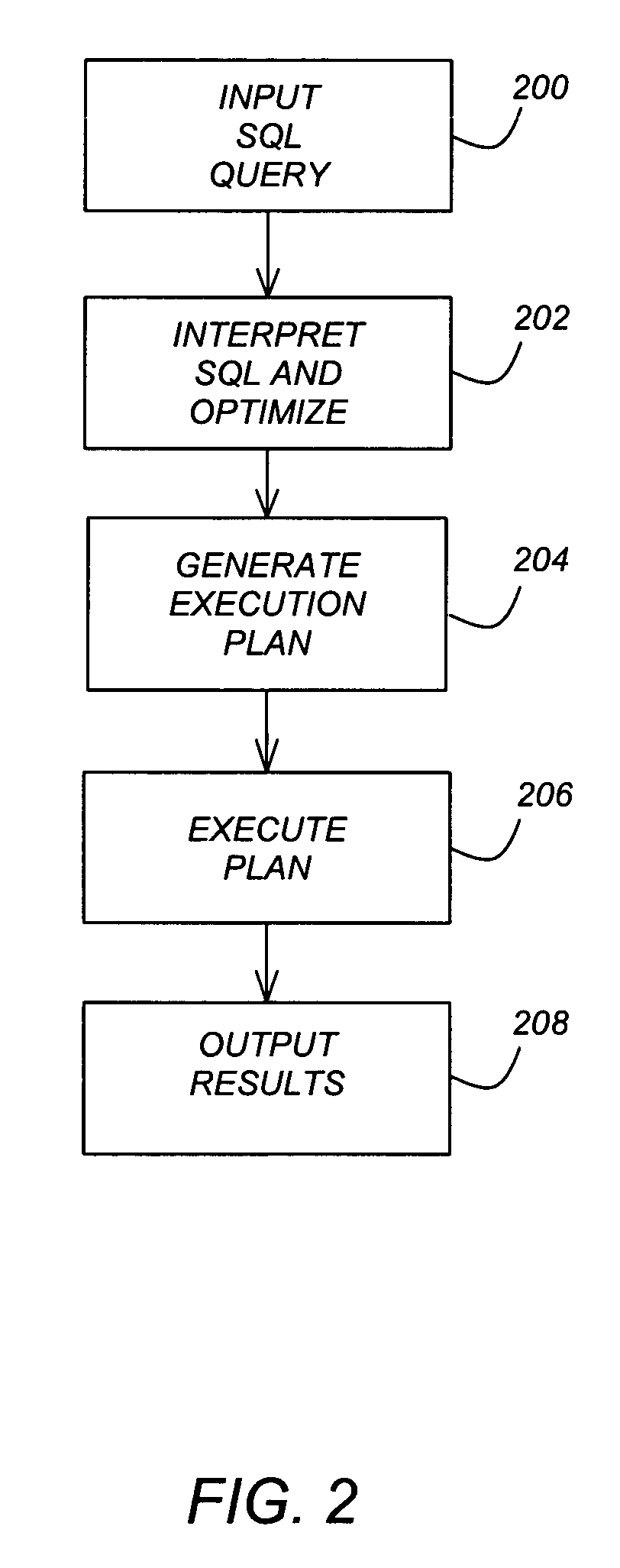Query transformation for union all view join queries using join predicates for pruning and distribution
a join query and join predicat technology, applied in the field of database management systems, can solve the problems of ineffective queries, and no branch can be pruned based on local predicates
- Summary
- Abstract
- Description
- Claims
- Application Information
AI Technical Summary
Benefits of technology
Problems solved by technology
Method used
Image
Examples
case b
[0044]4. The query has one of the following characteristics:[0045]Case A: A select-list of the query block does not contain an aggregate function, a DISTINCT modifier, or a GROUP BY clause;[0046] A select-list of the query block contains a DISTINCT modifier, but does not contain aggregate functions or a GROUP BY clause; or[0047]Case C: A select-list of the query block contains one or more aggregate functions and / or a GROUP BY clause.
[0048]Logic of the Preferred Embodiment
[0049]FIGS. 4–6 together are a flowchart illustrating the logic of the method for query transformation according to the preferred embodiment of the present invention.
[0050]Block 400 is a decision block that represents a loop through all query blocks. For each query block, control transfers to Block 402. Upon the end of the loop, the logic exits.
[0051]Block 402 is a decision block that determines whether the query block contains multiple views or table expressions (wherein the term “view” is used in the following dis...
case c
[0149][0150]SELECT AYEAR, SUM(ADATA), COUNT(BDATA)[0151]FROM UIVA,UIVB, TC[0152]WHERE AYEAR=BYEAR AND[0153] UIVB.C=TC.C[0154]GROUP BY AYEAR;
[0155]Notice an extra table TC in the FROM clause. The proposed method will rewrite the above query as follows:[0156]SELECT AYEAR, SUM(SUMADATA), SUM(CNTBDATA)[0157]FROM[0158](SELECT AYEAR, SUM(ADATA), COUNT(BDATA)[0159]FROM A2001, B2001, TC[0160]WHERE AYEAR=BYEAR AND AYEAR=‘2001’ AND BYEAR=‘2001’ AND[0161] B2001.C=TC.C[0162]GROUP BY AYEAR[0163]UNION ALL[0164]SELECT AYEAR, SUM(ADATA), COUNT(BDATA)[0165]FROM A2002, B2002, TC[0166]WHERE AYEAR=BYEAR AND AYEAR=‘2002’ AND BYEAR=‘2002’ AND[0167] B2002.C=TC.C[0168]GROUP BY AYEAR[0169]UNION ALL[0170]SELECT AYEAR, SUM(ADATA), COUNT(BDATA)[0171]FROM A2003, B2003, TC[0172]WHERE AYEAR=BYEAR AND AYEAR=‘2003’ AND BYEAR=‘2003’ AND[0173] B2003.C=TC.C[0174]GROUP BY AYEAR[0175]) X(AYEAR, SUMADATA, CNTBDATA)[0176]GROUP BY AYEAR;
Conclusion
[0177]This concludes the description of the preferred embodiment of the inven...
PUM
 Login to View More
Login to View More Abstract
Description
Claims
Application Information
 Login to View More
Login to View More - R&D
- Intellectual Property
- Life Sciences
- Materials
- Tech Scout
- Unparalleled Data Quality
- Higher Quality Content
- 60% Fewer Hallucinations
Browse by: Latest US Patents, China's latest patents, Technical Efficacy Thesaurus, Application Domain, Technology Topic, Popular Technical Reports.
© 2025 PatSnap. All rights reserved.Legal|Privacy policy|Modern Slavery Act Transparency Statement|Sitemap|About US| Contact US: help@patsnap.com



